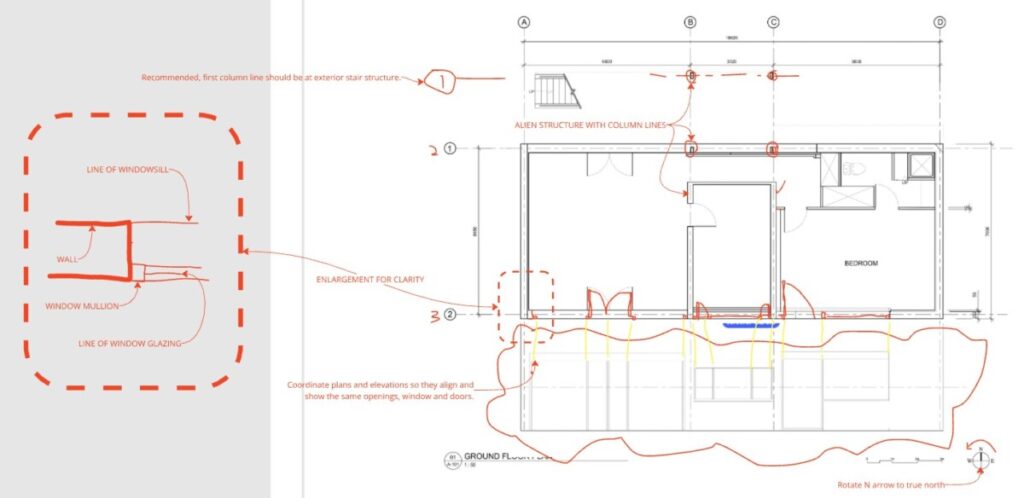I have posted some answers to questions I have received on the open lab bulletin board in case they are helpful. I’m looking forward to seeing your drawings in class on Tuesday.
The questions are in blue my responses are in green.
1. Should the plans include labels for everything, such as the kitchen and bathrooms, along with the numbers associated with these areas?
The convention for architectural drawings is that they include all casework, or all built in furniture so that would include kitchen and bathroom cabinets, and not tables and chairs.
2. Regarding the dimensions, such as the length and width of spaces and the placement of everything within them, should all details be included as they are in the picture, or only what we deem necessary?
You may reduce the amount of information in the plans you should include some dimensions. The best strategy is to think about the purpose of your architectural drawings. In this case we are designing the set for a contractor so you should think about what a contractor would need to build the project.
3. I’ve noticed that we need four drawings for assignment B01 Plans:
As discussed in class the B01 drawing list did needed to be updated for this semester. The B01 drawing list currently on the openlad is updated to reflect the current module B project (for sections: Semmler D075 [2:30PM], Aptekar D076 [2:30PM], & E078 [6:00PM]).
I’ve completed A-101 (the basement) and A-104 (the long section aka the first image provided in openlap ), but I’m not sure if A-104 is the roof plan because I can’t see it labeled elsewhere. Could you please clarify if I’m on the right track?
The second section should be labeled “A-301 BUILDING SECTIONS (east to west) “ there will be a requirement to complete a roof plan but it is not a requirement for this submission. See the revised assignment B01 on openlab.
For A-102 (the ground floor), I noticed some discrepancies between the AutoCAD file and the first floor provided in the open lab. Are we supposed to delete these differences? I’ve attached an image of what I found in the AutoCAD file for reference.
A-102 in the AutoCAD template file is an example of how to draw in plan. The plan included in the template is from a different case study. You will need to develop the ground floor from the planned and images on the miro board and on openlab.
As for A-103 (the second floor), I couldn’t find any reference in the open lab. How should we proceed with drawing it?
Levels 2 through 6 as discussed in class will all be considered typical apartment units that a typical apartment unit plan is the one currently labeled 6th floor. You only need one plan “A-103 6TH FLOOR” to represent floors 2 through 6 in this project.








